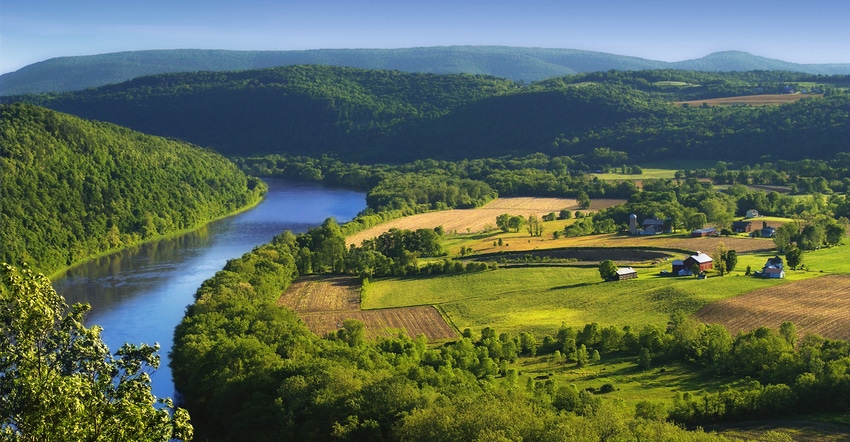December 20, 2017

The Chesapeake Program announced today that estimated water quality in the tidal Chesapeake has reached a near-record high. According to preliminary data, almost 40% of the Chesapeake and its tidal tributaries met clean water standards for clarity, oxygen and algae growth between 2014 and 2016. That’s a 2% increase from the previous assessment period, due largely to a rise in dissolved oxygen in the ’s deep channel.
That’s the second highest estimate of water quality standards since 1985. “Improving trends in water quality standards attainment follow similar trends in other indicators that we track,” reports Nick DiPasquale, director of the Chesapeake Program. “The acreage of underwater grasses has increased to more than 50% of goal. We’re seeing increased diversity of grass species and the density of grass beds. We also are witnessing improvements in several fisheries, including blue crabs, oysters and rockfish.”
"It’s clear the Clean Water Blueprint is working,” adds Beth McGee, Chesapeake Foundation director of science and agricultural policy. “Our water is getting cleaner, leading to smaller dead zones and more grasses and oysters.”
The rest of the story
Water quality remains far below the 100% attainment needed for a stable aquatic habitat. Some 60% of tidal waters are still considered impaired.
“While these improving trends are encouraging, we must ramp up our efforts to implement pollution control measures to ensure progress toward 100% of the water quality standards is achieved throughout the and its tidal waters,” DiPasquale says. Water quality must improve in 60% of the and its tidal tributaries if the estuary is to function as a healthy ecosystem. The challenge of putting enough conservation practices on the ground to further reduce agricultural runoff and urban runoff to local waterways remains.
The Chesapeake Program employs several environmental indicators to track pollution and assess aquatic health. The Watershed Model computer simulation system is used to estimate the impact that local conservation and best management practices have had on nutrient and sediment loads.
Monitoring data collected from stations on the nine largest watershed rivers provide the foundation for experts to estimate the total nitrogen, phosphorus and sediment entering the and its tidal tributaries each year. Data collected from stations in non-tidal waters allow assessing the aquatic response. Even more monitoring data is also collected from a comprehensive network of hundreds of tidal water stations.
What the data shows
Computer simulations show that best management practices currently in place can achieve 33% of nitrogen reductions, 81% of phosphorus reductions and 57% of sediment reductions necessary. In 2016, Chesapeake Program partners surpassed their phosphorus- and sediment-reducing goals.
Nitrogen reductions, however, fell short of the target for the fourth year in a row, largely due to a gap in reported and implemented agricultural BMPs in Pennsylvania. That gap began to close in 2017 with a new statewide program.
Monitoring data from nontidal stations throughout the watershed show that 50% of the stations analyzing for nitrogen, 38% of the stations analyzing for phosphorus and 20% of the stations analyzing for sediment have experienced ten-year trend improvements. Some 31% of the nontidal stations analyzing for nitrogen, 26% analyzing for phosphorus and 37% analyzing for sediment have experienced degrading ten-year trends.
Water quality improvements take time, DiPasquale says. There are often lags between BMP implementation and their visible effects on a particular waterway.
“Robust funding, science and stewardship are paying off and cleaning up the ,” concludes Ben Grumbles, chair of the Chesapeake Program principals’ staff committee and secretary of Maryland.
In January, the Chesapeake Program will release the 2016-17 Barometer: Health and Restoration in the Chesapeake Watershed. It’ll explore how the entire Chesapeake ecosystem and its watershed are responding to the restoration efforts in backyards, cities and on farms.
Source: Chesapeake Program
You May Also Like




